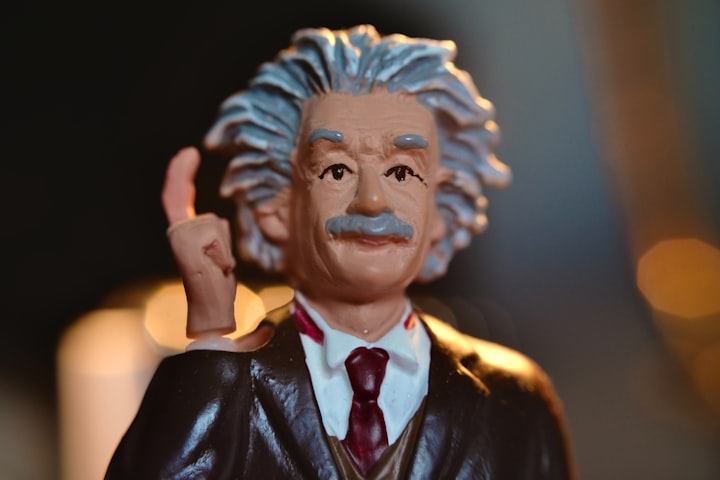How is artificial gravity created? Why is artificial gravity not used on the space station?
Humans want to enter the sea of stars must have artificial gravity technology

Although weightlessness in space is a wonderful experience, if humans stay in a weightless environment for a long time, the body will have all kinds of problems, such as muscle atrophy, bone density loss, and so on, so humans want to enter the sea of stars, it is necessary to have artificial gravity technology can be.
How to create artificial gravity?
The method of creating artificial gravity has long been available, as early as more than 100 years ago, people like the father of space Tsiolkovsky proposed that we can use the object rotation generated by the "centrifugal force" to simulate gravity. It should be noted that the "centrifugal force" is a virtual force introduced to facilitate the description of non-inertial reference systems, which is essentially a reflection of the inertia of the object.
When we use a rope to pull a bucket of water to rotate around itself at a certain speed, the water in the bucket is not spilled, and the reason for this phenomenon is that the water in the bucket by the "centrifugal force".
By the same token, if we make the space station in space into a ring and let it rotate, then the humans in it will also feel the "centrifugal force" and will "push" themselves to the outer wall of the station, and humans usually use themselves as a reference system (i.e. In this case, humans can stand firmly on the outer wall of the station, as if they were feeling gravity.
In theory, the use of "centrifugal force" to simulate gravity is perfectly feasible, in some works of science fiction also appeared in this space station. However, in the real world, although humans also have space stations, but they do not use this design, what is the reason?
Why does the space station not use artificial gravity?
If a space station wants to perfectly simulate the gravity of the Earth's surface (i.e., standard gravity) by rotating in space, it must equal the "centrifugal force," which is described by the formula F=mg, and the "centrifugal force," which is described by the formula F=mrω^2 where m represents the mass of the object, g represents the acceleration of gravity on the surface of the Earth (9.8m/s^2), r represents the radius of rotation, ω represents the angular velocity.
The angular velocity can in turn be described by the formula ω = 2π/t, where t represents the time (in seconds) it takes to rotate the system one revolution. After a simple derivation, we can derive the formula: (9.8/r) = 2π/t under the root sign, which can help us describe the relationship between the radius of rotation and the speed of rotation when the artificial gravity generated by the space station is equal to the gravity of the Earth's surface.
For example, when r is equal to 10 meters, t is equal to 6.35 seconds, which means that we only need to build a space station with a rotation radius of 10 meters and make it rotate every 6.35 seconds to produce the effect of standard gravity. But is it that simple? The answer is no.
First is the gradient of artificial gravity, because the size of the "centrifugal force" is proportional to the radius of rotation, and humans are tall, so the smaller the radius of rotation, the human head, and feet by the artificial gravity of the gap will be more obvious. In addition, the "Coriolis force" on the human impact should not be underestimated.
Due to inertia, in the rotating system of straight-line movement, the object will tend to continue to move in the direction of the original motion, but the rotating system itself is rotating, so if the perspective of the rotating system to observe, you will find that the object does not go straight, as if the object is subject to some kind of force.
This force is called the "Coriolis force", it should be noted that the "Coriolis force" is still essentially a reflection of the inertia of the object, so it is also a virtual force. As long as a human movement in the rotating space station, will be affected by the "Coriolis force", and because its size and the speed of rotation are proportional, so the higher the speed of rotation, the greater the impact on humans.
This means that a space station with too small a radius of rotation, or too fast a rotation speed is not suitable for humans, if humans are in such a space station, the light will be dizziness, nausea, directional recognition disorder, or directly unconscious. So we must build a space station with a large enough rotation radius, and its rotation speed is limited to the human acceptable range, how much is it?
Relevant research shows that when the rotation speed is less than 30 seconds/circle, the "Coriolis force" on human impact can be negligible, according to the previous formula can be calculated, in this case, the rotation radius needs to reach about 224 meters to produce artificial gravity with the standard gravity equivalent.
From the technical point of view, this use of artificial gravity space station can be manufactured, in the past days, scientists have also tried to design the use of artificial gravity space station, but eventually gave up, why? The reason is that the capital budget is too huge.
To the current level of human technology, to launch the mass of 1 kg of objects into space, at least 4600 U.S. dollars of launch costs, and a giant space station with a radius of 224 meters, its mass is at least 20,000 tons, so we have to launch this space station into space, it will cost at least 92 billion U.S. dollars.
And a space station of this magnitude, it's research, development, manufacturing, and post-maintenance costs will certainly be very high, it is estimated that it will require hundreds of billions of dollars. This is an unacceptable figure, and this is the reason why the current space station does not use artificial gravity.
Well, that's all we have for today, welcome to follow us and we'll see you next time.






Comments
There are no comments for this story
Be the first to respond and start the conversation.